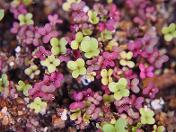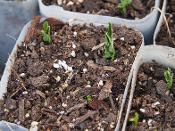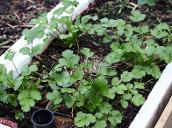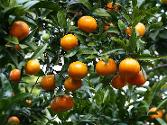Early Spring
Spring is officially here from the first of September, but by August days are longer and warmer, and
spring flowers are already beginning to fill the gardens with colour. We can still have some bitter
weather but everything looks brighter and cheerier.
This is a busy time of year in the home vegie garden, especially if you grow your vegies from seed - a
good thing to do if you want to keep costs down and want a bigger range of varieties.
Sow your seeds under cover for quick germination and growth.
NOTE: With the longer, warmer days you may see some of your vegetables and herbs -
parsley, silverbeet, lettuce, for example - sending up flower heads. The leaves can still be
eaten although they may not be as sweet and tender. Let some plants continue on to set
seeds. The flowers will encourage bees and other beneficial insects to your garden, and
you will have seeds for future crops.
Plant now for summer vegetables!
Sow seeds of these vegetables: beetroot, broccoli, cabbage, carrot (check the pack - sowing times
differ with the variety), leek, lettuce, parsnip, peas, silverbeet.
Sow seeds of these herbs: coriander, chives, parsley, fennel. Wait till October/November for basil.
Sow these vegetables and herbs under glass or in a hothouse: beans, capsicum, chillies,
tomatoes. From September start sowing cucumber, melons, pumpkin, zucchini, basil, dill.
Also plant out potato tubers, asparagus and rhubarb crowns.
Some seeds (root vegetables in particular) are best sown directly into the ground. Herbs like coriander
and dill are less likely to bolt to seed if sown this way. But watch out for snails.
Others are best sown in a seed tray then transplanted into pots before planting out into the garden.
(Success with seeds and seedlings) Use this technique for plants that really need warmth: tomatoes,
chillies, capsicum, basil. It is also useful for plants that snails and slugs are fond of: lettuce, cabbage,
broccoli, peas, beans.
Cucumbers, beans, peas, melons, pumpkins, zucchinis and sweet corn are best sown direct into
bottomless pots to minimise root disturbance when planted out into the garden bed. This technique
works well for coriander and dill too if snails are a problem.
Sowing seeds under glass, in a cloche, or in a small greenhouse will help speed up germination. This
is particularly useful for those heat loving summer vegies, and herbs like basil, which will otherwise
grow slowly and sulk if there is a cold snap.

Just emerged mustard seedlings. Ruby streaks is a beautiful fine-leafed mustard perfect for salads and garnish.

Sugar snap peas growing in cut off milk bottle pots. No podding for these peas - you eat the lot. Delicious.

This coriander is growing in a wicking box to ensure constant moisture in the warmer weather.

Murcott mandarins are ripening up nicely and look wonderful on the tree.
Other jobs for early spring:
Prepare garden beds for your summer crops: spread some well-rotted manure and straw (lucerne is
the 'gold class' option, pea straw is excellent, but both are pricier than wheat or oat straw).
Sprinkle wood ash around fruit trees if you can source it, otherwise use a bit of potassium sulphate to
encourage good fruit quality.
Use an organic citrus fertiliser around the citrus trees as the weather warms up.
Mount a search and destroy campaign against snails, slugs and citrus galls.
The heat of summer is still a way off, but it is a good time to start thinking about
how you will protect your fruit and vegetables on days of extreme heat,
and how you will keep water up to the vegie beds during dry spells.
Consider shade cloth shelters or throw-overs made from second hand terylene curtaining
- keep an eye on your local op shops.